How to properly store corn
Corn is an affordable, nutritious, very healthy and simply delicious product. To enjoy it when the desire arises, it is not necessary to purchase jars of canned grains, because there are many methods for storing corn.
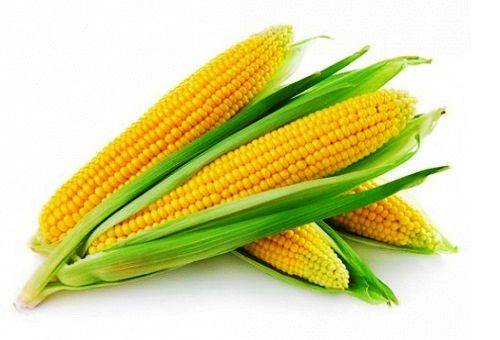
Few people know that it can not only be rolled into jars, but also dried and frozen. Moreover, not only in grains, but also in cobs. If you follow certain rules, even a fresh ingredient can be preserved for longer than several hours. Time-tested approaches are developed in such a way that they allow maximum preservation of all the benefits, aroma and taste of the cereal.
Features of storing fresh corn
To preserve the sweetness of the product, you need to free the cobs from the grains as quickly as possible and properly carry out the appropriate processing. In this case, the product will delight you with its original taste and aroma for another three weeks.
At home this can be done as follows:
- We clean the corn from dirt, fibers and leaves, put it in a wide pan.
- Pour cold water into another container, slightly smaller in volume, and add ice cubes. Next, add lemon juice and salt at the rate of a teaspoon of each product per liter of water.
- Stir the liquid and pour the resulting solution over the cobs, leaving to soak for 20 minutes.
- Next, we separate the grains from the base right in the water, throw away all the dirt, drain the water, throwing the corn into a colander.
- After getting rid of excess water, lightly dry the grains and place them in plastic ziplock bags. They should not be filled too tightly, but the air should be released as much as possible.
- We put the product in the refrigerator; to extend the shelf life of the ingredient, you can use the freezer.
If desired, such a preparation can be boiled, canned, or added to a prepared dish. The main thing is that the ingredient undergoes appropriate heat treatment.
Corn on the cob storage options
Most often, corn is stored on the cob for the winter. This approach allows you to preserve its sweetness, although it requires much more space, especially with an impressive harvest. The exposure option is selected depending on how long you plan to store the product at home:
- Fridge. We clean the cobs from leaves and fibers and distribute them unwashed into plastic bags. We put the packages in the refrigerator using a separate tray or shelf. This corn is best eaten within three days. They will retain their freshness longer, but the desired sweetness in the beans will no longer be present.
Advice: This approach is absolutely not suitable for storing corn for making popcorn. Even with suitable humidity, the seeds will swell slightly and their skin will soften. This will negatively affect the cooking process and the final result.
- Drying. We sort the corn, remove the fibers, do not cut the cobs, just open them. We hang the blanks in the attic or in another dry and well-ventilated room. You can place them separately or weave several braids, saving space.
- Freezing. This approach allows you to store corn at home from a year to a year and a half.Before freezing corn for the winter, it is necessary to carry out a number of manipulations aimed at processing it. If you simply put the fresh product in the freezer, you will end up with tasteless rubber grains.
In addition, corn can be canned. There are many recipes that allow you to roll grains in their pure form or as part of ready-made dishes. Particularly popular today are preserves made from small ears of corn, which are even eaten together with the base.
How to properly store boiled corn?
Every housewife knows how to properly boil the cobs of sweet cereal, but how to store corn after such processing is a question that haunts many. There can be two approaches here:
- If the product was prepared in a standard way and you simply did not have time to eat it right away, then you need to put the cobs in a separate container and wrap it in cling film. They can be kept in the refrigerator for no more than three days. To ensure that the grains retain their juiciness, it is recommended to pour the remaining broth over them.
- If you know in advance that after cooking the corn will need to be stored for some time, then it is worth trying a special type of processing available at home. First, boil the cobs for 10 minutes, cool them and remove the grains. We fill steam-sterilized jars with them, leaving a couple of centimeters of space on top. Fill with boiled water with a small amount of salt and close with lids. We put the containers in the refrigerator, after a couple of weeks you can add a little more liquid. In this state, the grains will retain their taste for 2-3 months.
Before consuming the standing product, you need to make sure that there are no foreign odors from the grains themselves and the filling.
Technology for freezing corn kernels and cobs
Before freezing corn for the winter, you need to decide on your approach to work. The blanks can be in the form of cobs or individual grains. This has virtually no effect on the technology of the process, but it is more convenient to store the grains, and the cobs will give the corn unusual juiciness and sweetness.
When working with cobs, we proceed according to the following scheme:
- We clean the cob from leaves, fibers, substandard grains, and cut off its tip.
- We prepare two pans - with cold water and boiling water.
- First, put the cobs in hot water, wait a couple of minutes, transfer to cold water and also wait a couple of minutes. We repeat the manipulation 3-5 times.
- Place the cobs on a thin, lint-free towel and wait until they dry well.
- Next, each fruit is individually wrapped in cling film and placed in the freezer.
Corn frozen this way must be properly thawed before cooking. It needs to be kept in the refrigerator for several hours. It is strictly forbidden to immerse the cob in boiling water immediately after removing it from the freezer; the product will turn out rubbery.
The single grain approach differs from the previous procedure only in the last step. We separate the dried and cooled cobs into individual grains and place them in plastic bags with ziplocks, after which we put them in the freezer. During freezing, the container can be shaken several times to prevent the grains from sticking together. If all stages of the manipulation were done correctly, then the workpiece will not even have to be sorted out, there will be no damaged elements in it.
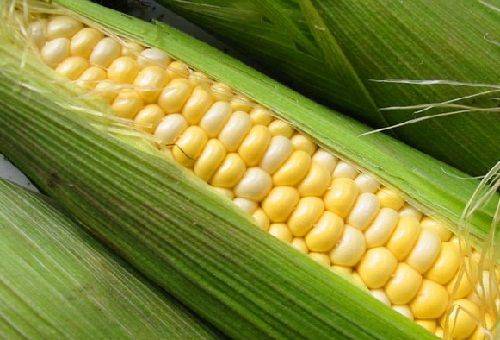
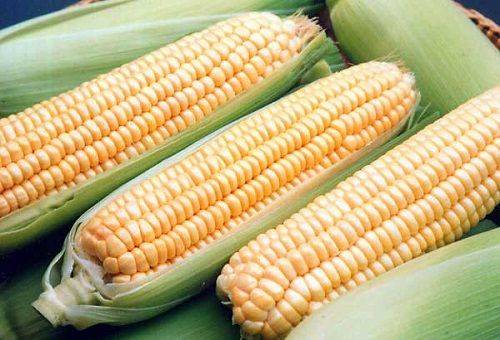
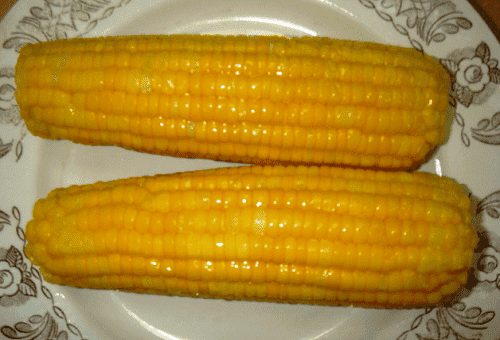
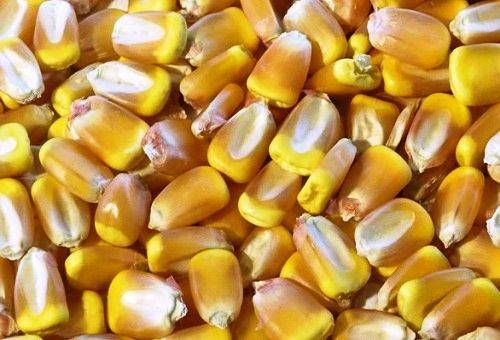
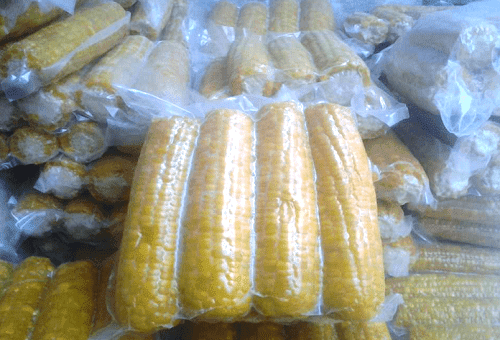
Thank you, I learned one very useful tip!